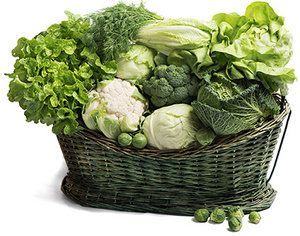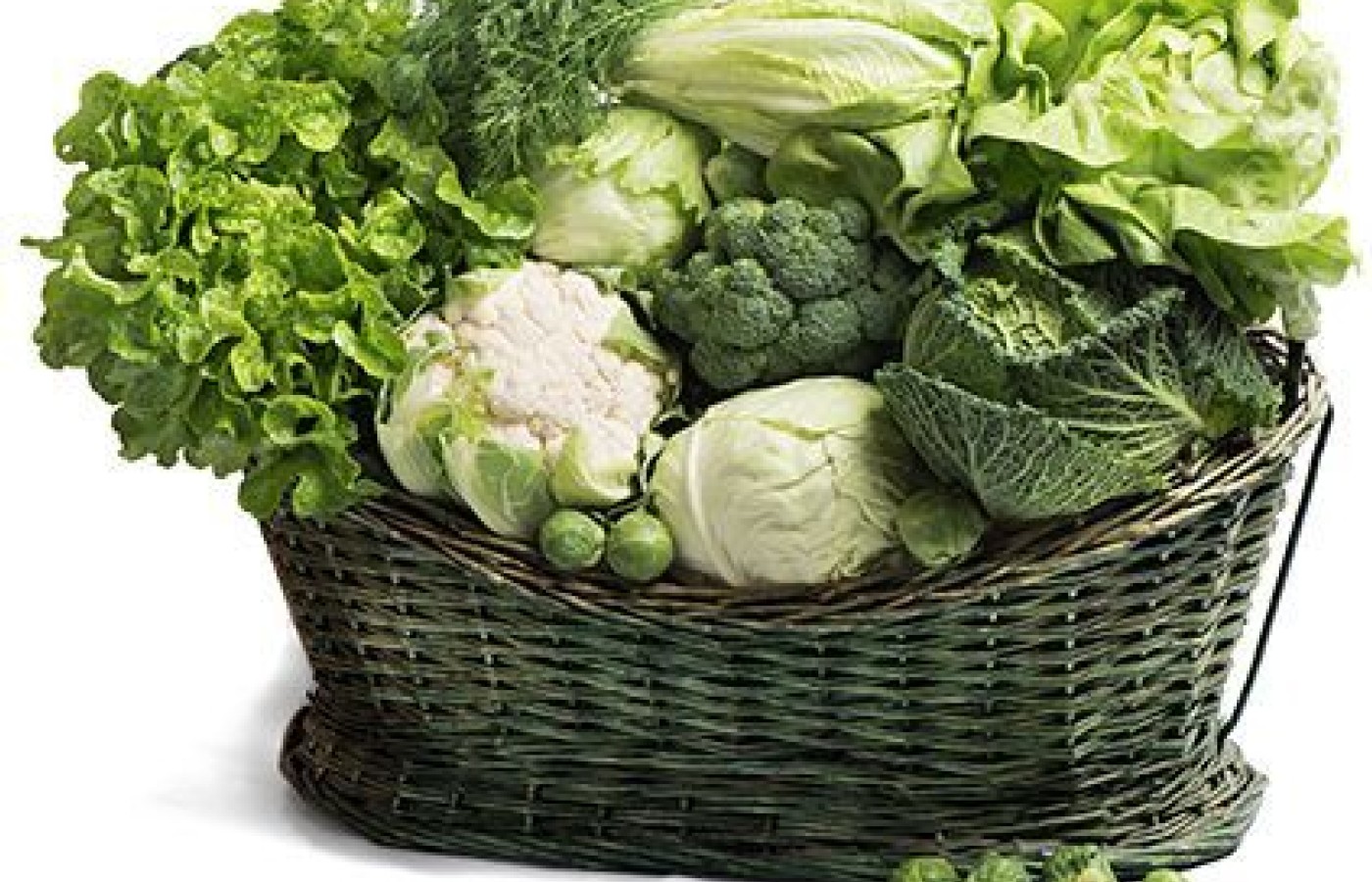TrA-2, my primary needle location, I needle 95% of the time and I think it works the best. You’ll know you have the right point location when you discover the muscle twitching when applying electric stimulation.
Detoxification Demystified and the Crucifers that Help
"Let food be your medicine and medicine be your food," is a quote often attributed to Hippocrates, a philosopher of the 5th century BC. This sentiment may have been ahead of its time two millennium ago, but today is regarded as common sense, as it is readily accepted that food forms a foundation of health.
In the past several decades, strong evidence has mounted that diets high in certain foods, such as fruits and vegetables, may be health protective and reduce the risk for many chronic diseases.1 While dietary patterns have been linked to health support, so have certain foods and their constituent compounds. One example of this link is the upregulation of detoxification enzymes in the liver, helping the body to clear both toxic foreign compounds and endogenous toxic metabolites that are formed during normal physiology.2 In particular, cruciferous vegetables, such as broccoli, cabbage, Brussels sprouts, and lesser-known, yet equally powerful Spanish black radish have been shown to enhance the detoxification system in this way.3,4,5
Acupuncturists and other health care professionals can use this current research to their advantage in practice. To appreciate how foods like Spanish black radish can support normal healthy detoxification, it helps to understand how the body processes compounds for elimination.
Understanding Detoxification

Detoxification involves enzymes that biotransform, or change toxins from one chemical form to another in the body. Detoxification takes place primarily in the liver and has generally been classified into two phases, though in recent years, a third phase has been recognized.6 In general, phase one enzyme action includes oxidation, reduction, and hydrolysis reactions. These reactions add or remove electrons or oxygen molecules or split molecules by adding a water molecule. You do not need to understand the chemistry here, but the major players are the cytochrome P450 (CYP 450) enzymes, a large and diverse class of compounds that are often referred to as drug-metabolizing enzymes. These enzymes typically create reactive intermediates that need further processing to be safely eliminated from the body. Some CYPs are also responsible for hormone metabolism, such as metabolizing estrogen, to potentially less estrogenic products.
Phase two enzymes often metabolize the products of phase one enzymes. Typically, they add bulky water-soluble molecules to free radicals and reactive oxygen species, creating conjugates, or joined molecules that typically have lower overall energy and that can then be excreted in the bile or urine. Phase three of the detoxification pathway involves efflux proteins located on cellular membranes in many organs of the body, that actively move compounds out of cells. These proteins can decrease absorption of xenobiotics, or foreign compounds, at the gut level, as well as excrete compounds from organs into the blood. In the liver in particular, these proteins are able to efflux phase two conjugates into the bile duct for excretion into the intestine.
An important aspect of our detoxification system is that we need all three of these phases to be working and in a balance that favors toxin elimination. Since phase one enzymes can create reactive intermediates, we also need phase two enzymes to properly conjugate those reactives, and then phase three proteins to assist with efflux. Also important, the detoxification enzymes and proteins are highly inducible, meaning that compounds, specifically food components, can enhance this system.6
Cruciferous Vegetables
The health-promoting effects of broccoli and other crucifer vegetables have long been recognized and there is strong epidemiologic evidence that these vegetables may reduce the risk for certain cancers.3 The protective effects are generally attributed to the metabolites or breakdown products of glucosinolates, known as isothiocyanates (ITCs) that are formed from the action of the plant enzyme, myrosinase. Glucosinolates are a large family of sulfur-containing compounds that are almost exclusive to the Brassica genus. When the cells of the plants are disrupted by chopping or chewing, the glucosinolates come into contact with myrosinase and are then hydrolyzed to form ITCs. Alternatively, glucosinolates that reach the gut intact may be hydrolyzed by bacterial myrosinase in the colon. It has been demonstrated that fresh broccoli is a more bioavailable source of ITCs because cooking can destroy the myrosinase enzyme.7 Raw broccoli provides both the active myrosinase and the glucosinolate, so the reaction can continue in the gastrointestinal tract with the helpful addition of colonic bacterial myrosinase.
The ITC is the active principle of the crucifers implicated in most of the protective detoxification mechanisms in the body. The mechanisms for this involve upregulation of gene expression.4 Many ITCs from cruciferous vegetables are considered bifunctional inducers, meaning they coordinately upregulate expression of both phase one and two enzymes, important in favoring toxin elimination.
An important aspect of many ITCs is that they are intrinsically unstable. This means that the glucosinolate precursor requires the presence of the myrosinase enzyme close to the time of ingestion. Eating fresh, whole crucifers, such as broccoli, have repeatedly been demonstrated to be the best way to get these impactful phytochemicals. Due to the strong flavors of crucifers, however, many patients may not comply with recommendations to consume this family of vegetables. Supplements made from crucifers are an increasingly popular alternative, although one that has not been subjected to the same breadth of research that can be found on whole vegetables or dietary patterns. There are many crucifer-based supplements currently available to consumers. However, in light of the instability of the bioactive components, it is important to know which are delivering the desired clinical effects.
Spanish Black Radish
Though a lesser-known crucifer, Spanish black radish (Raphanus sativus L. var niger) is of European origin and has a long history of culinary and traditional use for well-being. It has documented traditional use in conditions involving the gastrointestinal, hepatic, and biliary systems.8 According to Chinese medicine, radish is a cooling vegetable that transforms thick mucous conditions associated with heat.9 This interesting vegetable of the crucifer family now also has modern scientific support for use in supporting the body's healthy detoxification system alongside other more popular crucifers.
Spanish black radish contains glucosinolates at more than 4% of total dry weight, whereas broccoli contains approximately 1%.10 Spanish black radish also has a unique profile of glucosinolates and the primary ITC is as potent as sulforaphane from broccoli at inducing phase two gene expression in human cells and in mice fed a 20% Spanish black radish diet.11,12,13 The high glucosinolate concentration and bioactivity in comparison to other crucifers suggests that consumption of a lower amount of Spanish black radish could result in similar biologic effect.
In a recent open-label pilot study of 20 healthy male subjects, the clinical effects of a supplement made from dried whole Spanish black radish were evaluated and a significant effect on the induction of detoxification enzymes, as measured by subsequent metabolites was found.5 Subjects consumed 2,220 milligrams of the Spanish black radish daily for four weeks and were challenged at baseline and again at the end of four weeks with a 1,000 milligram dose of acetaminophen. After four weeks on the Spanish black radish supplement, there was a significant decrease in some of the plasma acetaminophen metabolites and an associated increase in the urine metabolites.
Since acetaminophen is metabolized by many of the same phase two enzymes influenced by ITCs from crucifers, these changes suggest up-regulation of phase two enzymes. Additionally, plasma 17-β estradiol was reduced after four weeks, suggesting an increase in the phase one CYP enzyme that metabolizes estrogen. Together, these results suggest that daily consumption of 2,220 mg of this whole-food Spanish black radish supplement may act as a bifunctional inducer, up-regulating both phase one and two detoxification enzymes and providing balanced detoxification support in healthy men. Future work with a placebo and in other populations will be necessary to demonstrate consistent and repeatable efficacy.
By explaining to patients current research on the detoxifying effects of certain foods like Spanish black radish, they may be more willing to adjust diets or use supplements to support a healthier lifestyle. Though sometimes daunting, acupuncturists and other health care practitioners should not be afraid to take the time to explain research and illustrate to patients the importance of food and supplements in today's diets.
References:
- Fardet A and Boirie Y. 2014. Associations between food and beverage groups and major diet-related chronic diseases: an exhaustive review of pooled/meta-analyses and systematic reviews. Nutr Rev. 72(12):741-762.
- Finley JW, Kong AN, Hintze KJ, Jeffery EH, Ji LL, Lei XG. 2011. Antioxidants in foods: state of the science important to the food industry. J Agric Food Chem. 59(13):6837-46.
- Keck AS, Finley JW. 2004. Cruciferous vegetables: cancer protective mechanisms of glucosinolate hydrolysis products and selenium. Integr Cancer Ther. 3(1):5-12.
- Houghton CA, Fassett RG, Coombes JS. 2013. Sulforaphane: translational research from laboratory bench to clinic. Nutr Rev. 71(11):709-26.
- Evans M., Paterson E., Barnes DM. 2014. An open label pilot study to evaluate the efficacy of Spanish black radish on the induction of phase I and phase II enzymes in healthy male subjects. BMC Comp Alt Med. 14:475.
- Jeffrey EH. Detoxification Basics. 2007a. Altern Ther Health Med. 13(2):S96-9. [url=http://www.alternative-therapies.com/at/web_pdfs/ifm_proceedings_low.pdf]http://www.alternative-therapies.com/at/web_pdfs/ifm_proceedings_low.pdf[/url] Accessed July 30, 2015.
- Verkerk, R., Schreiner, M., Krumbein, A., Ciska, E., Holst, B., Rowland, I., de Schrijver, R., Hansen, M., Gerhauser, C., Mithen, R., Dekker, M., 2009. Glucosinolates in Brassica vegetables: the influence of the food supply chain on intake, bioavailability and human health. Mol. Nutr. Food Res. 53, S219–S265.
- Vargas R, Perez RM, Perez S, Zavala MA, Perez C. 1999. Antiurolithiatic activity of Raphanus sativus aqueous extract on rats. J Ethnopharmacol. 68(1-3):335-8.
- Pitchford, P. Healing with Whole Foods: Oriental Traditions and Modern Nutrition. 1993. North Atlantic Books, Berkley, CA.
- Ciska E., Martyniak-Przybyszewska B, and Kolzowska H. 2000. Content of Glucosinolates in Cruciferous Vegetables Grown at the Same Site for Two Years under Different Climatic Conditions. J Agric Food Chem 48,2862-2867.
- Hanlon PR., Webber DM., Barnes DM. 2007. Aqueous extract from Spanish black radish (Raphanus sativus L. Var. niger) induces detoxification enzymes in the HepG2 human hepatoma cell line. J Agric Food Chem. 55 (16): 6439-46.
- N'jai AU., Kemp MQ., Metzger BT., Hanlon PR., Robbins M., Czuyprynski C., Barnes DM. 2012. Spanish black radish (Raphanus sativus L. Var. niger) diet enhances clearance of DMBA and diminishes toxic effects on bone marrow progenitor cells. Nutr Cancer. 64(7):1038-48.
- Scholl C., Eshelman BD., Barnes DM., Hanlon PR. 2011. Raphasatin is a more potent inducer of the detoxification enzymes than its degradation products. J Food Sci. 76(3): C504-11.



